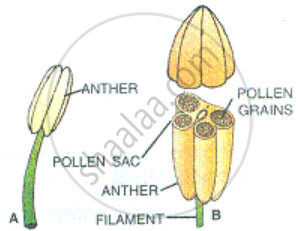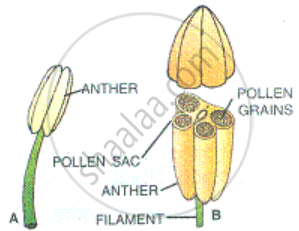Advertisements
Advertisements
Question
Write down the different positions of floral leaves on the thalamus in detail?
Solution
Based on the position of calyx, corolla, and androecium in respect to the ovary on the thalamus, there are three floral whorl conditions. These are
(i) Hypogyny - In this flower, the ovary occupies the highest position on the thalamus, while the petals, sepals, and stamens are separately inserted below the ovary. The ovary in such flowers is said to be superior. E.g., mustard and china rose.
(ii) Perigyny - In this condition, the margin of the thalamus grows upwards to form a cup-shaped structure called calyx tube enclosing the ovary. The ovary here is said to be half inferior. E.g., plum and rose
(iii)Epigyny - In this flower, the margin of thalamus grows upwards enclosing the ovary completely and getting fused with it. The other parts of the flower are above the ovary. Hence, the ovary is said to be inferior. E.g. Sunflower, flowers of cucumber.
APPEARS IN
RELATED QUESTIONS
Distinguish between the following pairs:
Petals and petaloid sepals
Given below are two figures (A and B) of a certain part of a flower. Study the figures carefully and answer the following question:

Which major organ of a flower does the figure A represent? What is the collective term for this organ ?
Given below are two figures (A and B) of a certain part of a flower. Study the figures carefully and answer the following question:

Are the contents of the pollen sacs in B male or female?
Given below are two figures (A and B) of a certain part of a flower. Study the figures carefully and answer the following question:

Can you state how the contents of the pollen sacs would come out?
Define the following term and mention its main functions:
Perianth
Write a difference between:
Androecium and Gynoecium
Write four lines on the following:
Androecium
Bring few hibiscus flowers to the classroom. Distribute the flowers to children. Introduce the parts of the flower to them. Then, ask them to observe and feel the different parts of the flower and tell them to record their observation.
| Parts of flower | What is its colour? |
| Petal | |
| Sepal | |
| Pistil | |
| Stamen |
From the following plants, which of them have flowers?
Grass, maize, wheat, chilli, tomato, tulsi, peepal, shisham, banyan, mango, jamun, guava, pomegranate, papaya, banana, lemon, sugarcane, potato, groundnut.
Kurinji or Neelakurinji (Strobilanthes kunthianu) blossoms once in ______ years.
